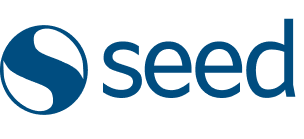Our team member, Santiago Naranjo, attended DrupalCon Vienna 2025 thanks to the Inclusion Fund Scholarship. It was an experience that combined technical learning, personal growth, and collaboration, reaffirming our commitment to the Drupal community.
Cesta de la compra
Innovation
We have joined Drupal AI Makers, the global program that brings together the main players in the Drupal ecosystem to build its future with AI. From Latin America, we contribute research, development, and a human vision that uses AI to enhance creativity and innovation.
Posted in
Drupal 11 and artificial intelligence make a powerful duo. In this workshop, Daniel Sarmiento taught how to create a custom theme from scratch by integrating AI at every stage: from generating code and styles to optimizing content management. In this article, we summarize the lessons learned and the keys to applying this combination in your upcoming projects.
Posted in
Web accessibility is inclusion, innovation, and the future. In this blog, we show you how Drupal integrates accessibility into every digital project: from ready-to-use templates and modules to tools for validating international standards such as WCAG. A practical guide to understanding why Drupal is the perfect ally for building more usable, sustainable, and responsible websites.
Posted in
AI agents are revolutionizing the way we interact with technology. Unlike traditional chatbots, they don't just answer questions: they learn, adapt, and perform real actions, creating more human and personalized digital experiences. From improving processes to freeing teams from repetitive tasks, these systems set a new standard in the relationship between people and technology. The future is here, and it starts with AI agents.
Posted in
In this article, we share how Seed EM has evolved over its 18-year history: from being a web development team to becoming digital solution architects. This transformation has led us to design more robust, scalable platforms that are aligned with real business objectives. Beyond code, today we build technology with purpose, strategic vision, and continuous support.
Posted in
At Seed, we work with agile methodology to deliver visible results in each iteration. Through short meetings and a collaborative process with the client, we define user stories, design, develop, and validate in two-week cycles, ensuring constant progress and efficient projects!
Posted in
The launch of Drupal CMS marks a milestone in the creation of fast and functional websites. Discover how this new optimized tool revolutionizes content management, allowing small and medium-sized businesses to achieve professional results without the need for complex development. At Seed EM, we show you how to leverage Drupal CMS to accelerate your project's implementation and maximize its performance. Are you ready to transform your digital presence?
Posted in
Drupal is gaining ground in Latin America as the ideal platform for complex digital projects. Thanks to its flexibility, scalability, and multilingual capabilities, it adapts to the needs of governments, universities, and media, driving digital transformation with autonomy and sustainability.
Posted in
Web Initial Paragraphs is a Drupal module that speeds up content creation through predefined, versatile, and customizable paragraphs. Ideal for projects of any size, it allows you to integrate components into blocks, views, and nodes, reducing development time with simple configuration and manageable CSS styles. Find out what makes it different and how to start using it today.
Posted in
